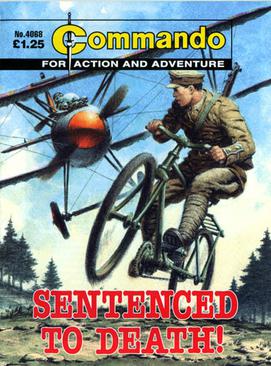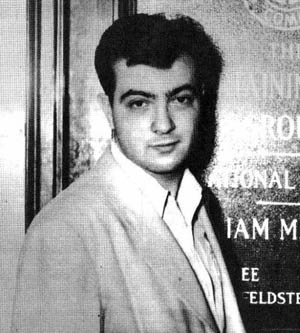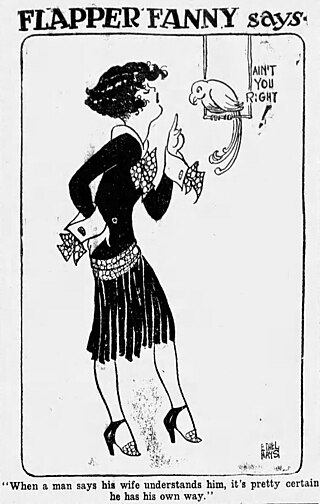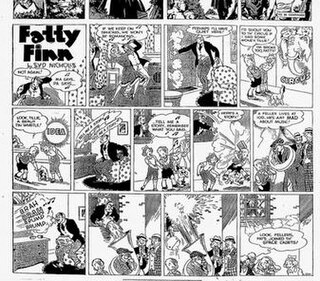Related Research Articles

The Phantom is an American adventure comic strip, first published by Lee Falk in February 1936. The main character, the Phantom, is a fictional costumed crime-fighter who operates from the fictional African country of Bangalla. The character has been adapted for television, film and video games.

Commando For Action and Adventure, formerly known as Commando War Stories in Pictures, and colloquially known as Commando Comics, is a British comic book magazine that primarily draws its themes and backdrops from the various incidents of the First and Second World Wars. It was first published in July 1961 and is still in print today. It is noted for its distinctive 7 × 5½ inch, 68 page format that became a standard for these kinds of stories. "Commando" has remained more popular than many other British war comics, because of its character based stories and detailed black and white artwork, with only the covers in colour. It is considered by some to be one of the greatest war comics in history.

Joseph Orlando was an Italian-American illustrator, writer, editor and cartoonist during a lengthy career spanning six decades. He was the associate publisher of Mad and the vice president of DC Comics, where he edited numerous titles and ran DC's Special Projects department.
Lloyd Piper was an Australian cartoonist and art teacher, best known as the third artist to take on the iconic Australian comic strip, Ginger Meggs, which he drew from 1973 until his death in 1983.
Montague Thomas Archibald Wedd was an Australian comic artist, animator and author.

Henry Boltinoff was an American cartoonist who worked for both comic strips and comic books. He was a prolific cartoonist and drew many of the humor and filler strips that appeared in National Periodical comics from the 1940s through the 1960s.

Australian comics have been published since 1908 and Australian comics creators have gone to produce influential work in the global comics industry,

Air Hawk and the Flying Doctors was an Australian comic strip created by John Dixon. The strip began publication on 30 May 1959, premiering in the Saturday issue of Perth's Weekend Mail. It was subsequently published by other Australian Sunday newspapers, Sydney's The Sun-Herald, Brisbane's The Sunday Mail and Adelaide's Sunday Mail. In May 1963, 'Air Hawk' also became a daily strip and unlike most US adventure strips, the Sunday and daily continuity on 'Air Hawk' were separate stories with Dixon writing them both. By 1967 the strip was appearing not only in every Australian state, but also in Britain, New Zealand, South Africa, France, and both North and South America. Dixon continued the strip until 1986. Dixon was assisted over the years by Mike Tabrett, Hart Amos, and Keith Chatto (1977-onwards). Chatto had previously ghosted the daily strip for a short period in 1972 before he took over drawing the Sunday version of the strip in the middle of 1977.

Flapper Fanny Says was a single-panel daily cartoon series starting on January 26, 1925, with a Sunday page following on August 7, 1932. Created by Ethel Hays, each episode featured a flapper illustration and a witticism. The Sunday strip concluded on December 8, 1935; the daily panel continued until June 29, 1940.
Horwitz Publications is an Australian publisher primarily known for its publication of popular and pulp fiction. Established in 1920 in Sydney, Australia by Israel and Ruth Horwitz, the company was a family-owned and -run business until the early 21st century. The company is most associated with their son Stanley Horwitz, who took over publishing operations in 1956. Stanley was eventually succeeded by his son Peter and daughter Susan, who was the company's director in the years 1987-2016.
Carl T. Pfeufer was an American comic-book artist, magazine illustrator, painter, and sculptor. He was an early contributor to American comic books; one of the primary early artists of the Marvel Comics superhero the Sub-Mariner; and the longtime artist of Western hero Tom Mix's comic books.
John Dixon was an Australian comic book artist and writer, best known for his comic strip creation, Air Hawk and the Flying Doctors.
Ronald Keith Chatto was an Australian comic book artist and writer. He was the first Australian illustrator to draw a full-length episode of The Phantom comic.

Fatty Finn was a popular long-run Australian comic strip series, created in 1923 by Syd Nicholls. It ran in syndication until the creator's death in 1977.
Paul Wheelahan was an Australian comic book writer, artist and illustrator, best known for his creations, The Panther and The Raven.
Moira Bertram was an Australian comic book artist and illustrator.

Captain Atom is an Australian comic book series created and written by Jack Bellew with illustrations by Arthur Mather. It was published from 1948 to 1954, with 64 issues and it also appeared as strips in a number of Australian newspapers. The protagonist, the first to use the name, has no relation to the later American superhero Captain Atom, published by Charlton Comics in 1965 and subsequently by DC Comics in 1987.
Peter Chapman was an Australian comic book writer and illustrator. His most notable works were The Phantom Ranger, The Shadow and Sir Falcon.
Kreigh Taylor Collins, born in Davenport, Iowa, was an American cartoonist best known for the comic strip Kevin the Bold.
References
- 1 2 3 4 Emery, Matt (27 January 2012). "Maurice Bramley". Pikitia Press. Retrieved 21 May 2012.
- 1 2 "Bramley, Maurice". The Australian Literature Resource. Retrieved 21 May 2012.
- 1 2 "Weddings Bramley – Cox-Taylor". The Sydney Morning Herald . NSW: National Library of Australia. 19 August 1925. p. 8. Retrieved 22 May 2012.
- 1 2 John Ryan (1979). Panel By Panel: an Illustrated History of Australian Comics. Cassell. p. 210. ISBN 0-7269-7376-9.
- ↑ "Australian Women in War". Australian War Memorial. Retrieved 22 May 2012.
- ↑ "Maurice Bramley – Join us in a Victory Job". Art on Stamps. 25 April 2010. Retrieved 22 May 2012.
- 1 2 Patrick, Kevin (26 October 2006). "Bramley's Last Gunfighter". Comics Down Under. Retrieved 21 May 2012.
- ↑ Bramley, Maurice (c. 1950). Frogman. Page Publications.
- ↑ Dixon, John; Bramley, Maurice (1959). The Phantom commando. Horwitz Publications. Retrieved 15 May 2012.
- ↑ Patrick, Kevin (14 September 2007). "Unmasking the Phantom Commando". Comics Down Under. Retrieved 21 May 2012.
- ↑ Burrows, Toby; Stone, Grant (1994). Comics in Australia and New Zealand: the Collections, the Collectors, the Creators. Routledge. p. 36. ISBN 1560246642.
- ↑ Bramley, Maurice (1950). The Fast Gun No. 50. Page Publications. Retrieved 15 May 2012.